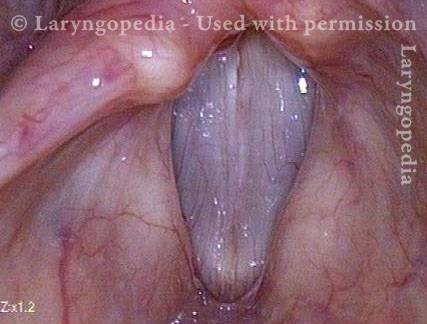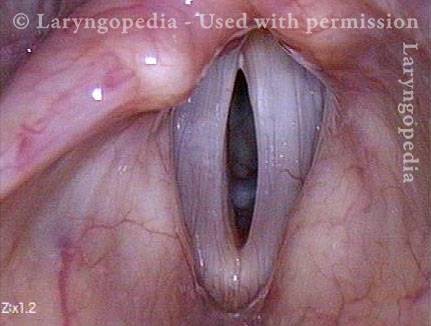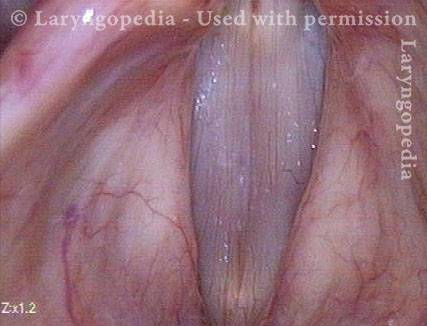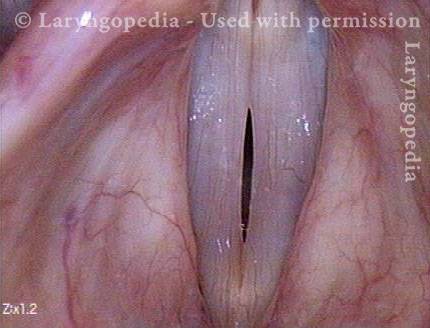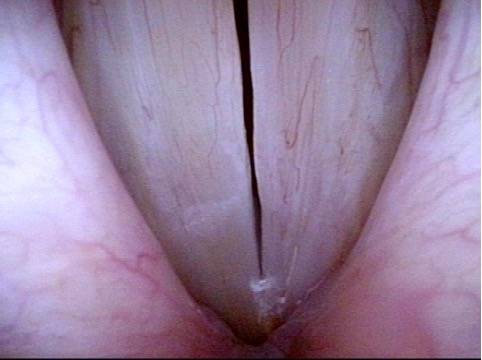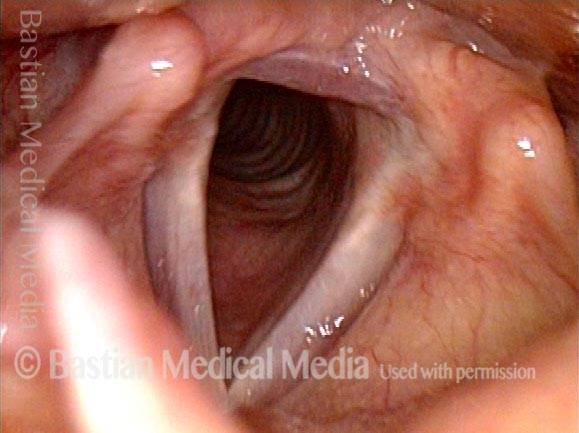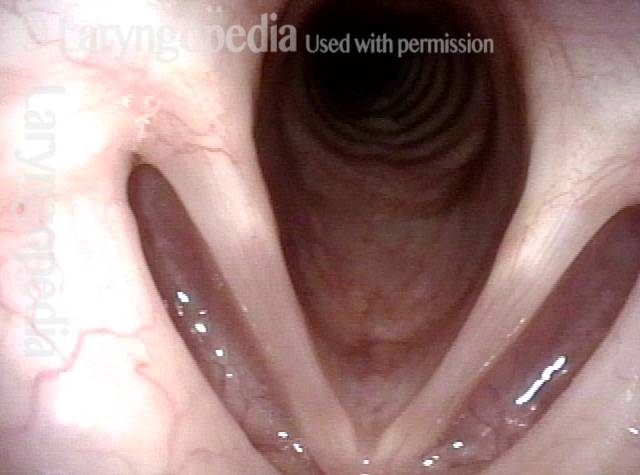Larynx
The larynx, also known as the voice box, is an organ of the anterior neck involved with breathing, phonation, and protection of the trachea. The vocal cords are housed within the larynx. The larynx connects the inferior part of the pharynx with the trachea.
Below are images of a normal larynx, offered as a point of comparison for all of the examples of laryngeal diseases and disorders elsewhere on Laryngopedia. One can reasonably call the vocal cords, “laryngeal lips.” Thinking of a trumpeter’s lips as an analogy, he or she separates them to take a breath, and then pinches them together to “buzz” into the mouth piece of the trumpet.
Similarly, the laryngeal lips separate for breathing, though in a V-shaped opening, and then press together in a line to “buzz” into the vocal tract. One could almost play the trumpet using the laryngeal lips!
Vocal cords (1 of 7)
Vocal cords (1 of 7)
Vocal cords during voice (2 of 7)
Vocal cords during voice (2 of 7)
Vibration in rubber bands (3 of 7)
Vibration in rubber bands (3 of 7)
Phonation under strobe light (4 of 7)
Phonation under strobe light (4 of 7)
Open phase of vibration (5 of 7)
Open phase of vibration (5 of 7)
Closed phase of vibration (6 of 7)
Closed phase of vibration (6 of 7)
Open phase (7 of 7)
Open phase (7 of 7)
Train your Eyes and Intensify Your Examination so that You Can See Tiny Things that Others Overlook
Prephonatory instant (1 of 4)
Prephonatory instant (1 of 4)
Phonation (2 of 4)
Phonation (2 of 4)
Open phase of vibration (3 of 4)
Open phase of vibration (3 of 4)
Closed phase of vibration (4 of 4)
Closed phase of vibration (4 of 4)
Train Your Eyes: Leukoplakia
Leukoplakia & Reinke’s Edema (1 of 3)
Leukoplakia & Reinke’s Edema (1 of 3)
Mucosal groove in strobe light (2 of 3)
Mucosal groove in strobe light (2 of 3)
Round free margin (3 of 3)
Round free margin (3 of 3)
More Photos
Larynx: breathing position (1 of 2)
Larynx: breathing position (1 of 2)
Larynx: phonatory position (2 of 2)
Larynx: phonatory position (2 of 2)
Nicotine Staining of a Damaged Larynx
Heavy smoker (1 of 2)
Heavy smoker (1 of 2)
Closer view (2 of 2)
Closer view (2 of 2)
The Asthenic But Normal Larynx
Asthenic larynx (1 of 6)
Asthenic larynx (1 of 6)
Slender vocal cords (2 of 6)
Slender vocal cords (2 of 6)
Prephonatory instant (3 of 6)
Prephonatory instant (3 of 6)
Phonatory view (4 of 6)
Phonatory view (4 of 6)
Strobe light (5 of 6)
Strobe light (5 of 6)
Closed phase (6 of 6)
Closed phase (6 of 6)
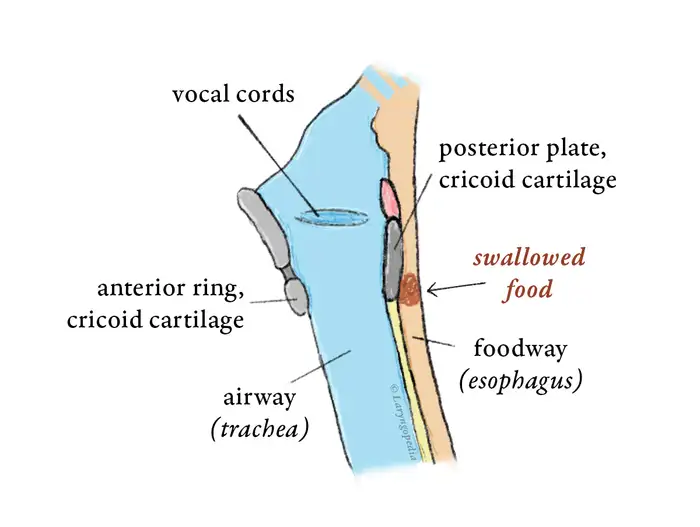

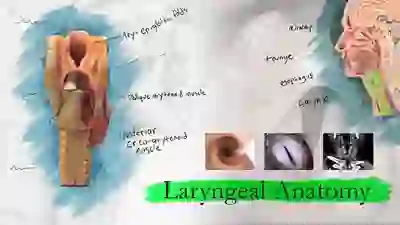
Introduction to Larynx, Pharynx, and Airway Anatomy
In this presentation Dr. Bastian provides an introduction to larynx, pharynx, and airway anatomy. This video can help individuals understand other material on this website.



